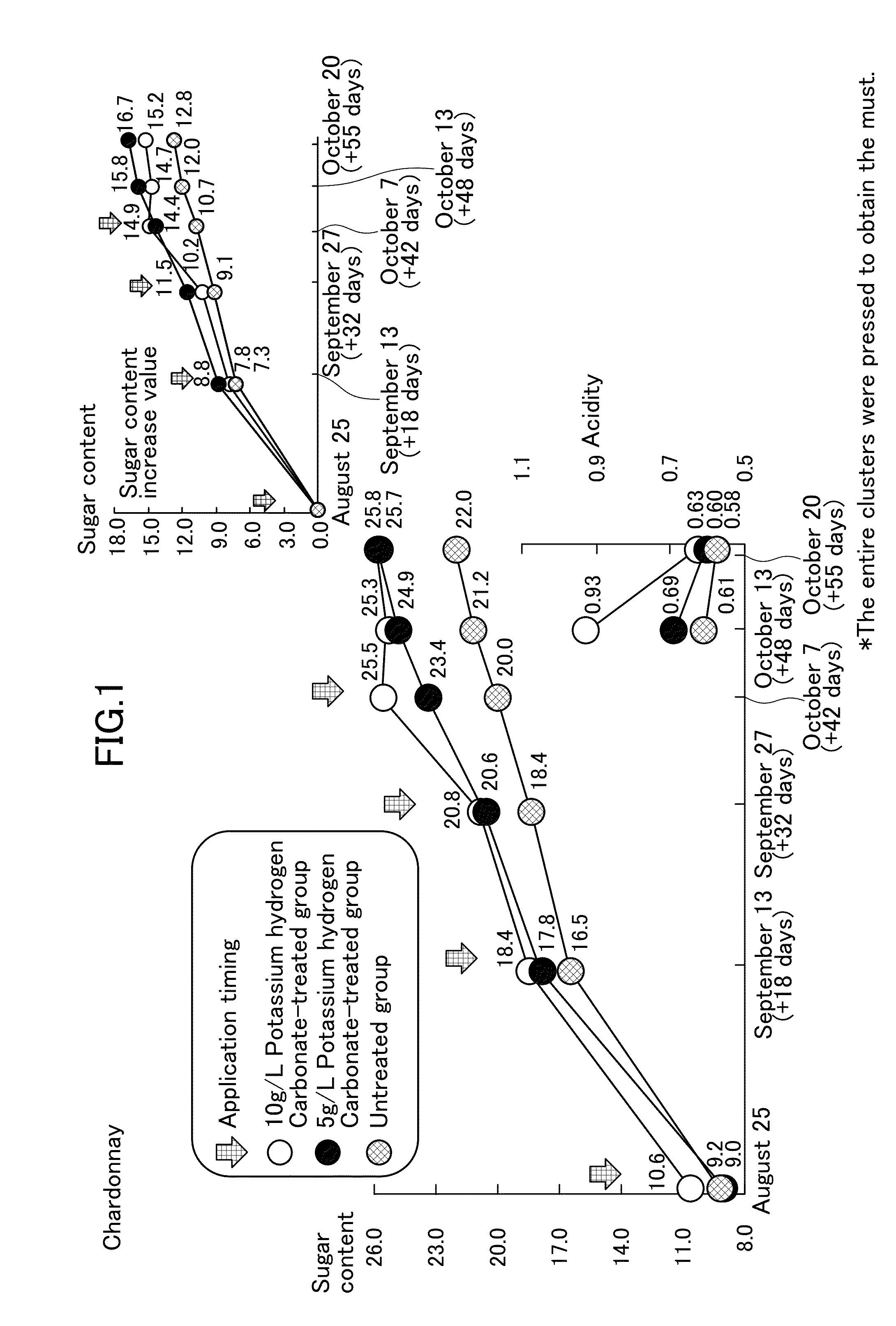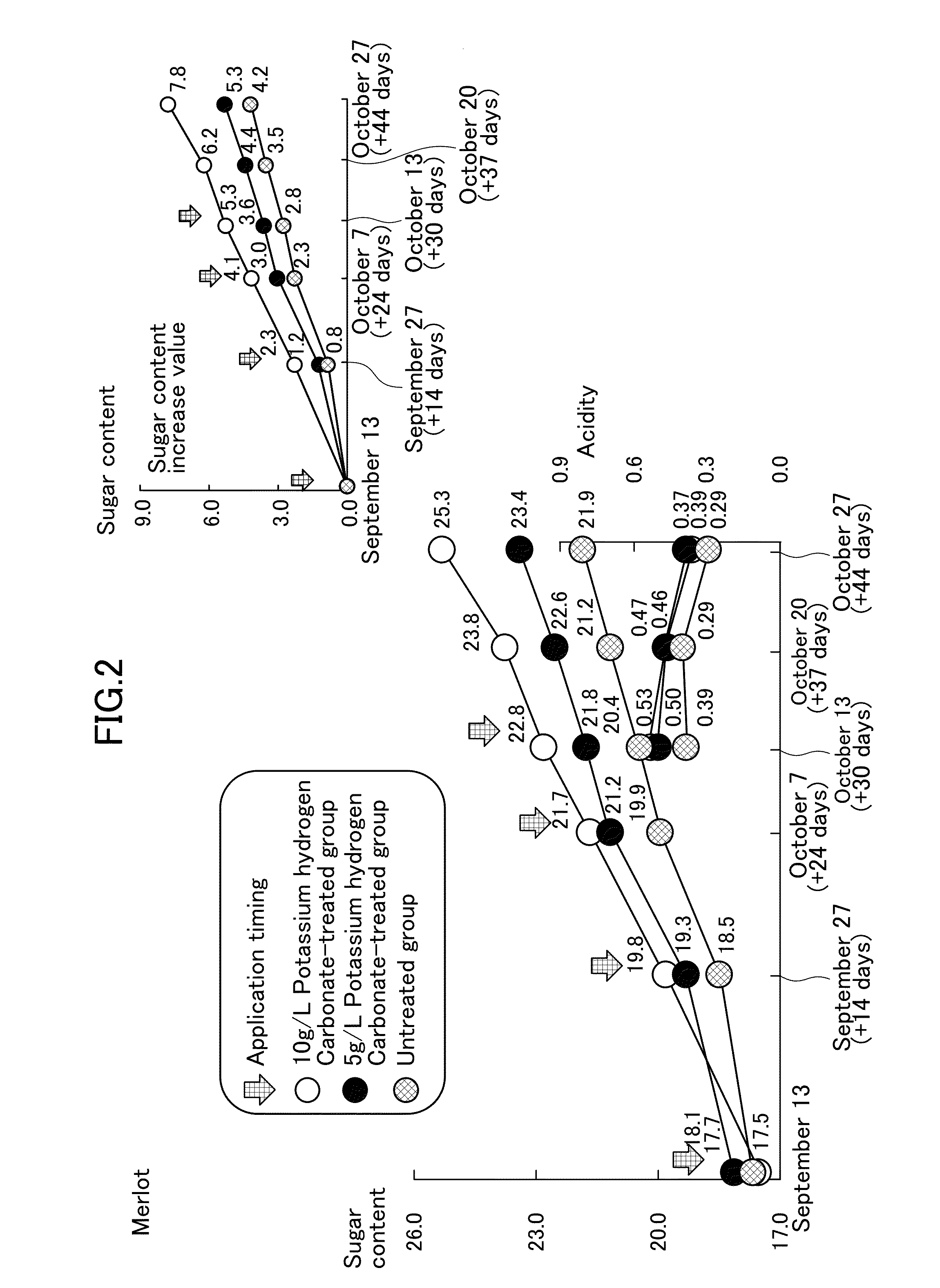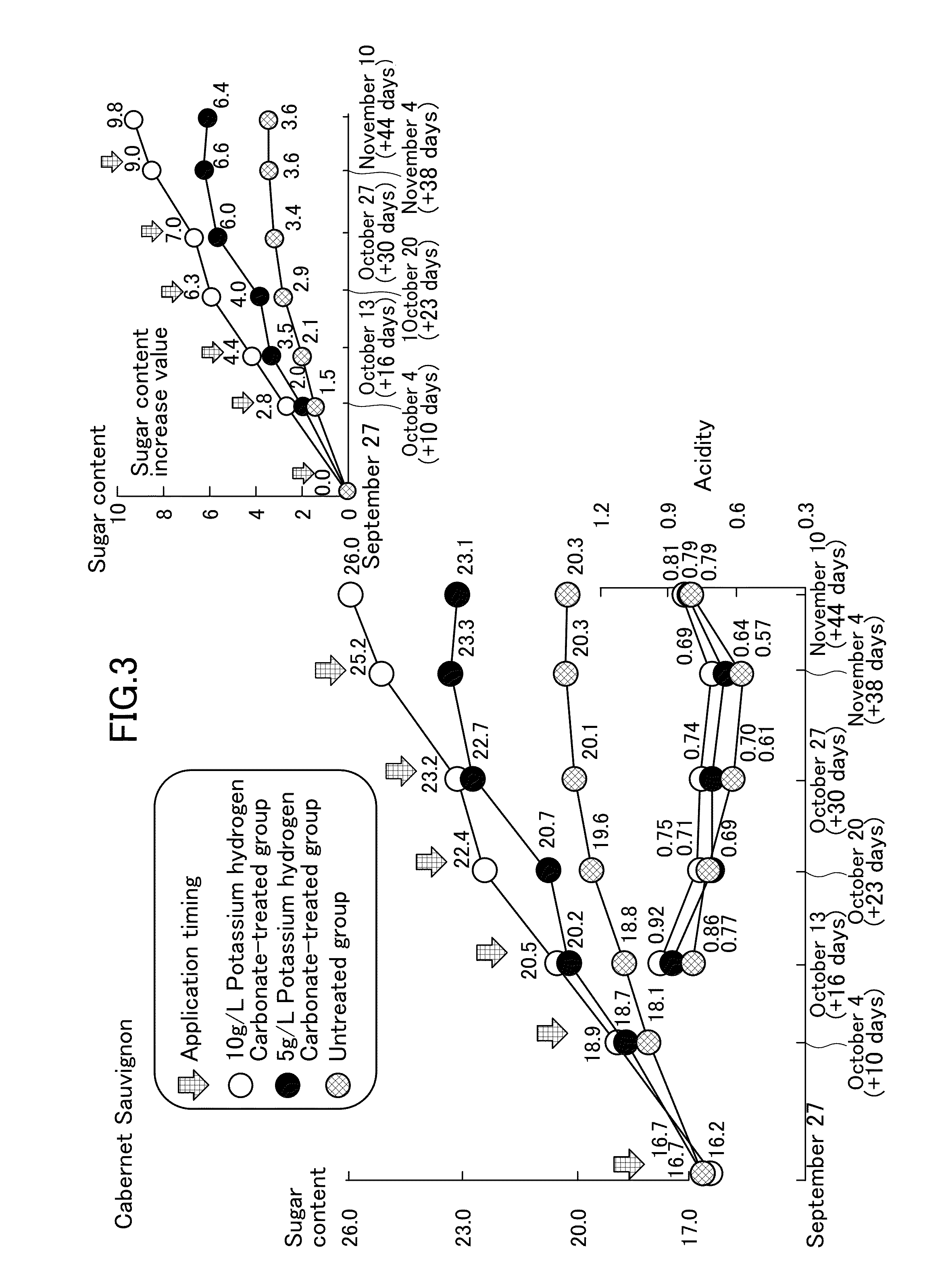Agent for increasing sugar content in fruit
a technology of sugar content and fruit, which is applied in the field of plant-based agents for increasing can solve the problems of wine chaptalization during its production being inferior in class to non-chaptalized wine, and insufficient so as to achieve simple method, increase sugar content in fruit, and short drying time
- Summary
- Abstract
- Description
- Claims
- Application Information
AI Technical Summary
Benefits of technology
Problems solved by technology
Method used
Image
Examples
example 1
Test of Increase in Sugar Content in Fruit by Application of Agent for Increasing Sugar Content in Fruit
[0110]To the entire vines including leaves and stems of grapes (varieties: Chardonnay, Pinot noir, Merlot, and Cabernet Sauvignon, 7 years old) in a farm field, an agent (containing Sorbon T-20 as a spreader / sticker at a concentration of 200 μL / L) for increasing a sugar content in a fruit diluted with water to have a potassium hydrogen carbonate concentration of 5 g / L or 10 g / L was applied in a sufficient amount (3000 L / ha (in this case, the amount of potassium hydrogen carbonate was 15 kg / ha for the 5 g / L sample or 30 kg / ha for the 10 g / L sample) each time. The application was repeatedly conducted at intervals of approximately 2 weeks or approximately 1 week as shown in FIGS. 1 to 4. The sugar concentration in the fruit was measured over time. As a control, unapplied vines were provided. The sampling was started before the first application, and a sample was collected before each...
example 2
Test of Increase in Sugar Content in Fruit by Application of Agent for Increasing Sugar Content in Fruit to which Vegetable Oils were Added
[0114]The vegetable oils, surfactants, and emulsifiers listed in Table 1 below were mixed with each other, and melted by heating at approximately 60° C. Next, the active ingredients listed in Table 1 were added to the obtained mixture liquids, followed by sufficient mixing. Thus, preparations of agents for increasing a sugar content in a fruit containing sodium hydrogen carbonate or potassium hydrogen carbonate were prepared (the preparations are also referred to as a sodium hydrogen carbonate preparation and a potassium hydrogen carbonate preparation, respectively). Note that parts in the table represents parts by mass.
TABLE 1Sodium hydrogenPotassium hydrogencarbonate preparationcarbonate preparationActiveSodium hydrogen carbonatePotassium hydrogen carbonateingredient(100 parts)(100 parts)VegetableSunflower oilSunflower oiloil and / or(22.4 parts)...
example 3
Test for Evaluating Amount of Transpiration and Degree of Increase in Sugar Content in Fruit
[0120]As can be seen from the results of Examples 1 and 2, the application of the agents for increasing a sugar content in a fruit of the present invention increased the sugar content in the fruit. However, it was not clear why the agent for increasing a sugar content in a fruit of the present invention increases the sugar content in the fruit. The action to increase the sugar content of grape by the noble rot fungus is caused by melting of a waxy material in the skin of the fruit by the noble rot fungus and resultant evaporation of water in the fruit. Accordingly, also in the case of the agent for increasing a sugar content in a fruit of the present invention, it could be considered that the transpiration of water in the fruit may be associated with the increase in sugar content. Therefore, investigation was made by the following experiment as to the relationship between the amount of water ...
PUM
| Property | Measurement | Unit |
|---|---|---|
| concentration | aaaaa | aaaaa |
| mass | aaaaa | aaaaa |
| concentration | aaaaa | aaaaa |
Abstract
Description
Claims
Application Information
 Login to View More
Login to View More - R&D
- Intellectual Property
- Life Sciences
- Materials
- Tech Scout
- Unparalleled Data Quality
- Higher Quality Content
- 60% Fewer Hallucinations
Browse by: Latest US Patents, China's latest patents, Technical Efficacy Thesaurus, Application Domain, Technology Topic, Popular Technical Reports.
© 2025 PatSnap. All rights reserved.Legal|Privacy policy|Modern Slavery Act Transparency Statement|Sitemap|About US| Contact US: help@patsnap.com



